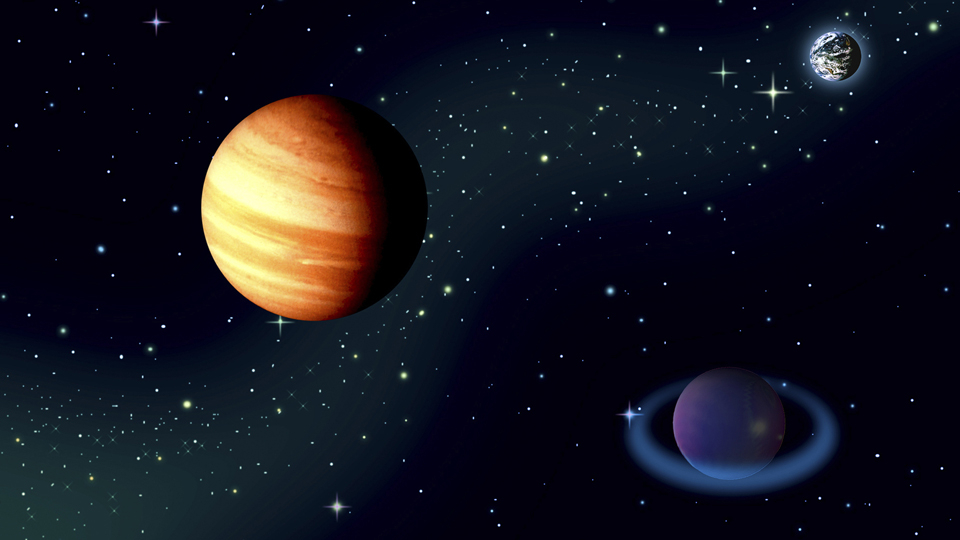美国天文学家说, 他们有强有力的证据表明在我们的太阳系中还存在着第九颗行星,就在冥王星遥遥之外的地方。加州理工学院 (Caltech) 的天文学家对这颗行星应该处在天空里的什么位置有一个模糊的概念。他们的这项工作肯定会激发一场试图追踪行星的运动。以下是BBC Jonathan Amos 的报道。
The idea that there might be a so-called Planet X moving in the distant reaches of the Solar System has been debated for more than 100 years. It's fallen in and out of vogue.
The latest claim is based on an analysis of the movements of objects in a band of icy material orbiting more than 3bn miles away known as the Kuiper Belt. The only way these alignments can be explained, say the Caltech team, is if an object ten times as massive as the Earth is out there somewhere moving perhaps 20 times as far away as Neptune, the current most distant planet.
The group hope their research will spark a telescope campaign to try to track it down.
One reason the claim is being taken so seriously is that it comes from the renowned astronomer Mike Brown. It was his discoveries in the outer Solar System that eventually led to Pluto losing its planet status in 2006.
词汇表
so-called 所谓的,号称的
debated (过去分词)辩论,争论
vogue 流行,风尚
claim 声称
alignments (空间)序列
renowned 有名的,享有声望的
status 地位,资格
测验
请听报道并回答下列问题。
1. What could indicate the existence of the ninth planet?
2. How big is the new planet thought to be?
3. Why are astronomers taking the idea that there is another planet in the Solar System seriously?
4. What happened to Pluto in 2006?
答案
1. What could indicate the existence of the ninth planet?
The particular way objects move in a band of icy material known as the Kuiper Belt.
2. How big is the new planet thought to be?
It's thought to be ten times bigger than Earth.
3. Why are astronomers taking the idea that there is another planet in the Solar System seriously?
Because it was announced by Mike Brown, who is a renowned astronomer.
4. What happened to Pluto in 2006?
It lost its planet status.


 3342次下载
点击下载
3342次下载
点击下载
 2621次下载 点击下载
2621次下载 点击下载
 4734次下载 点击下载
4734次下载 点击下载
 1854次下载 点击下载
1854次下载 点击下载
 1391次下载 点击下载
1391次下载 点击下载
 1391次下载 点击下载
1391次下载 点击下载











